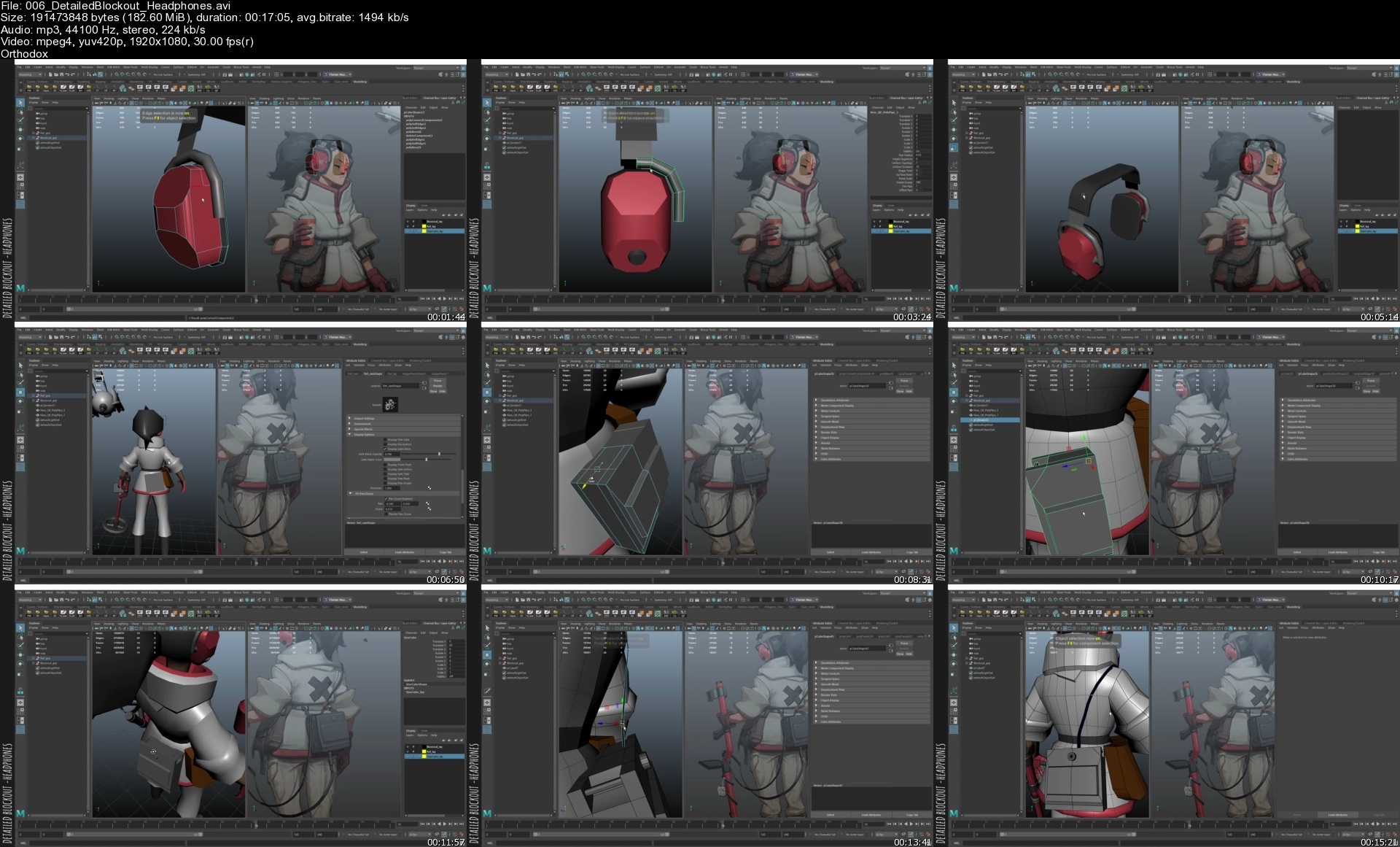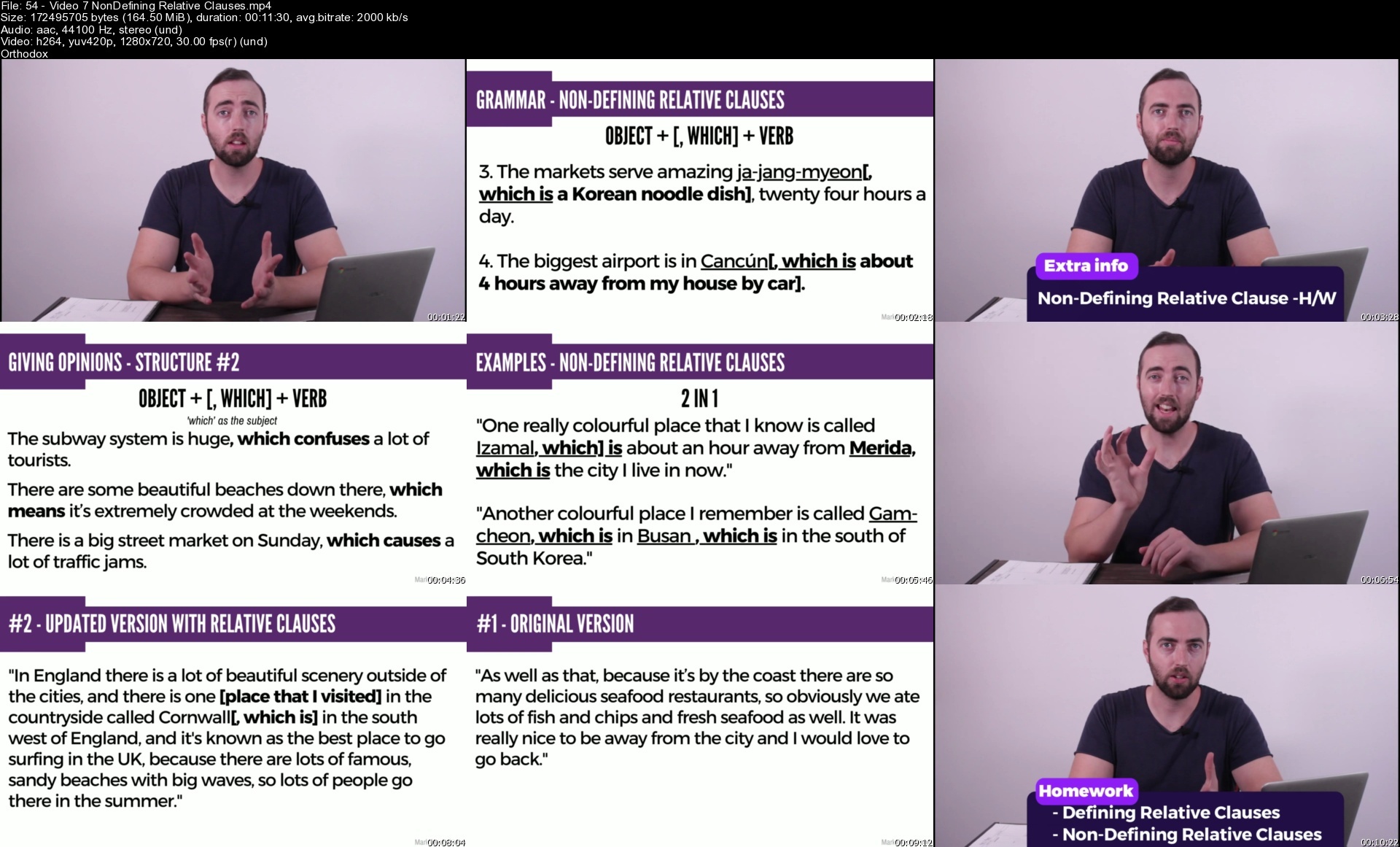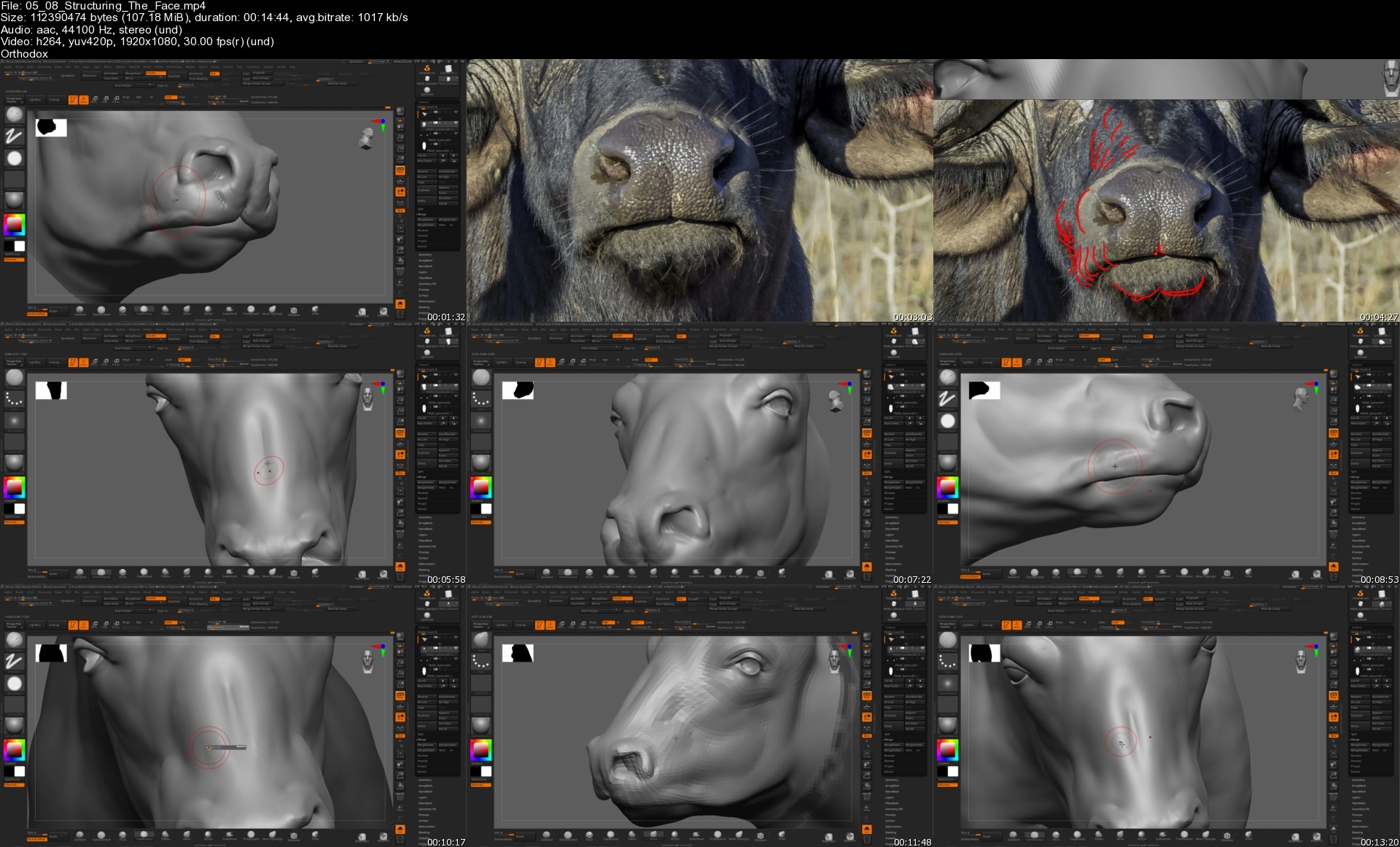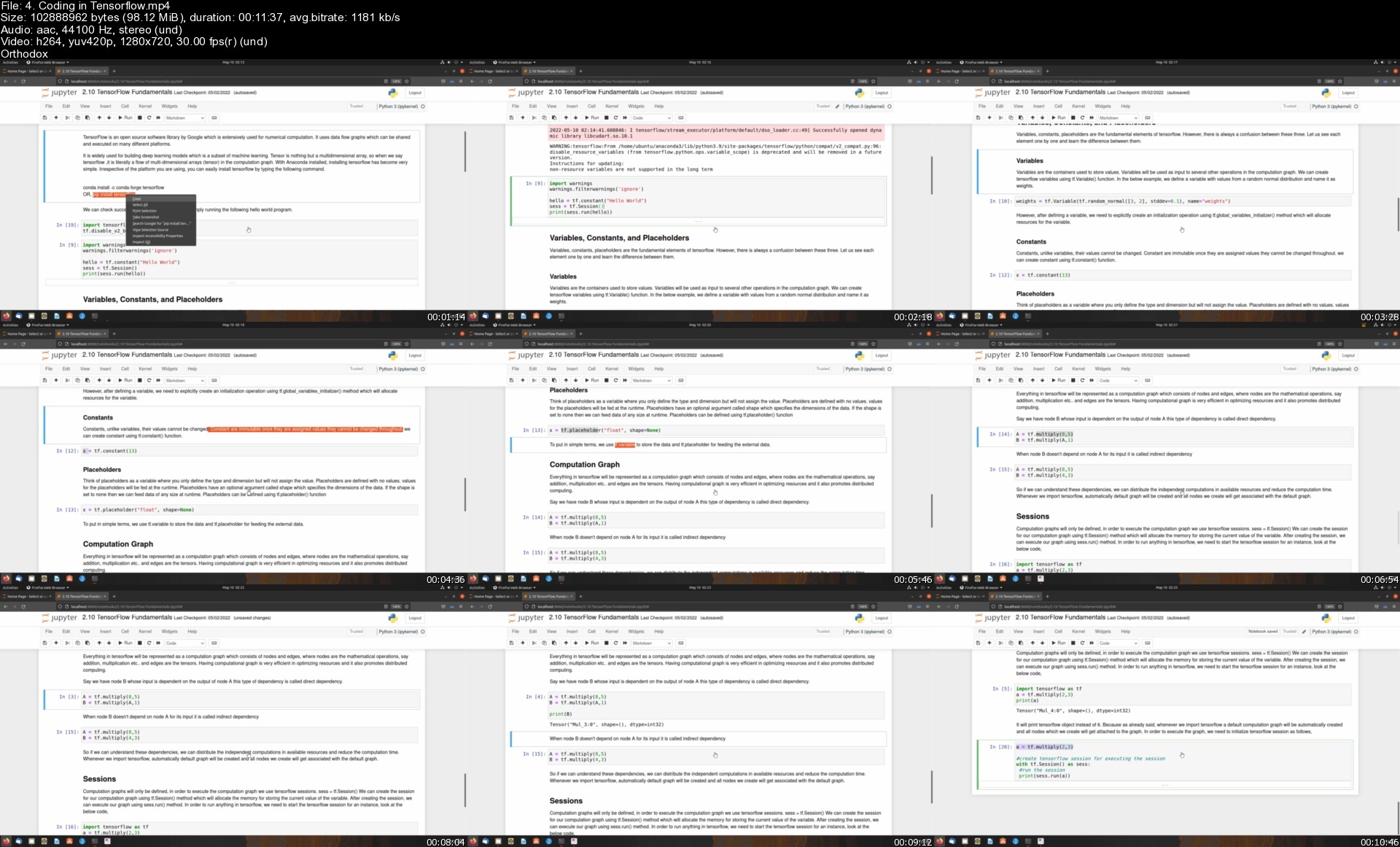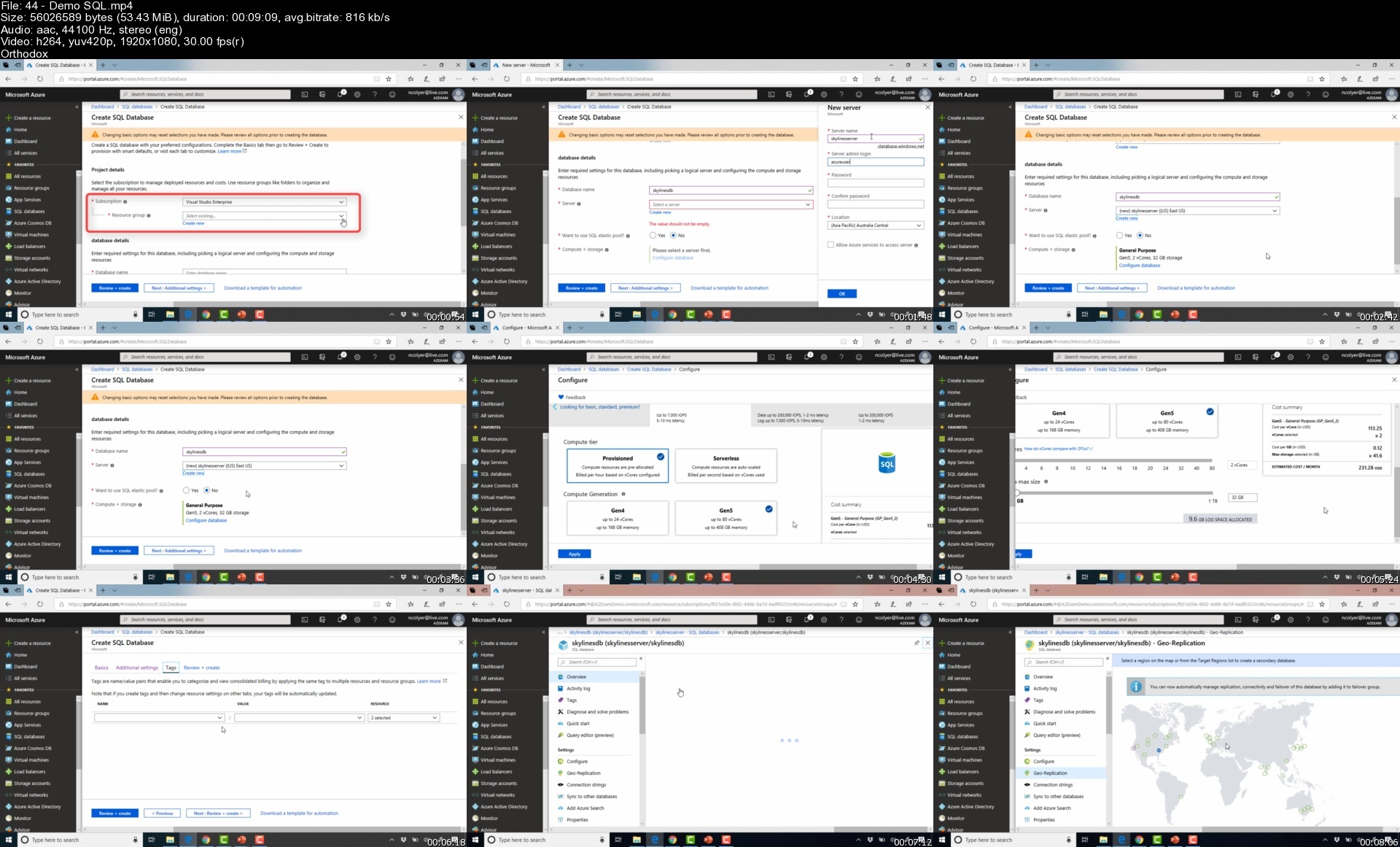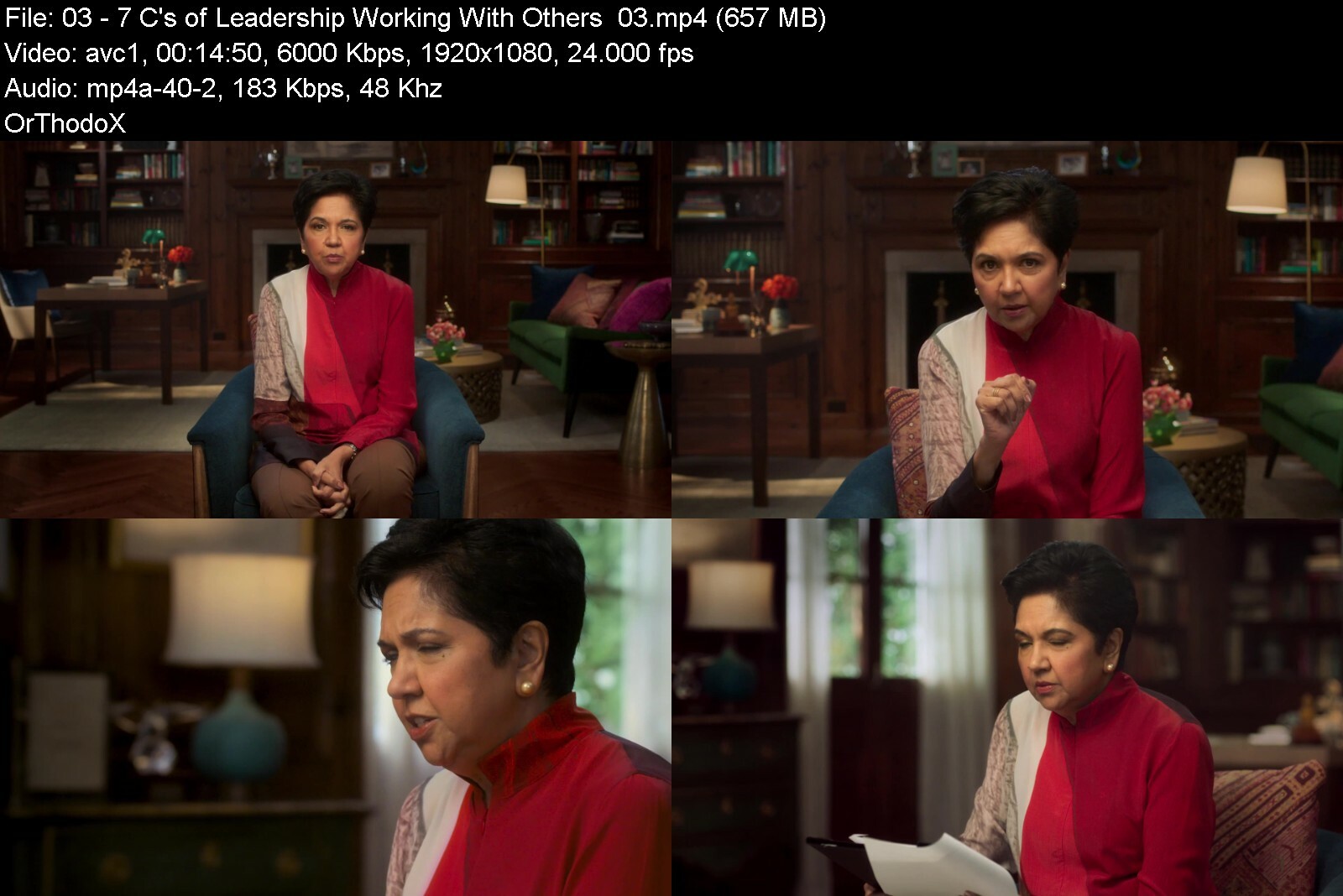Az-305 : Azure Architect Design Certification Prep
Az-305 : Azure Architect Design Certification Prep
Last updated 4/2022
MP4 | Video: h264, 1280x720 | Audio: AAC, 44.1 KHz
Language: English | Size: 8.35 GB | Duration: 22h 37m
Be able to advise customers and translate business requirements into Azure solutions by taking the AZ-305 exam!
What you'll learn
Learn how to design and architect Azure solutions
Requirements
Azure Solution Architects who advise stakeholders and translates business requirements into secure, scalable, and reliable solutions.
This role requires managing how decisions in each area affects an overall solution. Candidates must be proficient in Azure administration, Azure development, and DevOps, and have expert-level skills in at least one of those domains.
Candidates should have advanced experience and knowledge across various aspects of IT operations, including networking, virtualization, identity, security, business continuity, disaster recovery, data management, budgeting, and governance.
Description
Updated: April 10th 2022 - AZ-304 to AZ-305 updates! Microsoft has updated the exam to AZ-305 and this course is changing in accordance.Revised Governance, Identity, Monitoring Sections to reflect AZ-305 curriculum updates.Welcome to the Skylines Academy AZ-305 certification course!The AZ-305 (NEW EXAM) course is intended for IT engineers and architects who have previous experience of Microsoft Azure. Since Azure services were released, there have been several additions and updates to the platform that will be explored in this course. In order for you to achieve success and pass the AZ-305 exam, this Skylines Academy course will guide you through a series of sections, lectures, demonstrations, and hands-on labs, alongside other helpful study material. We have got you covered!During this course, you will gain knowledge and hands-on experience of

esign for GovernanceDesign for IdentityDesign for Logging & MonitoringImplement Cost Optimization for your environmentDesign Compute such as Virtual Machines for Windows and LinuxDesign and Manage Storage AccountsDeploy Automation and Configure ResourcesDesign Load Balancing and Network SecurityDesign for High AvailabilityArchitect Security for ApplicationsDesign an Application InfrastructureDesign Container-based ApplicationsDesign Data Platforms like Azure SQL and CosmosDBDesign a solution for Backup and Recovery with Azure Backup and ASRDesign Migrations using Azure MigrateLectures will educate you on the fundamental terms and principles of the Azure platform and demos will enable you with a hands-on experience using scenarios to empower you in the real world.Note: This course is being upgraded FREE OF CHARGE to the AZ-305 exam. All students can take either exam and the course will cover you fully.
Overview
Section 1: AZ-304 Course Introduction
Lecture 1 AZ-304 Course Introduction
Lecture 2 Connect with us and your fellow students
Lecture 3 PowerShell Reference Guide
Section 2: Design for Governance
Lecture 4 Accounts & Subscriptions Overview
Lecture 5 Subscription Management Demo
Lecture 6 Resource Groups
Lecture 7 Resource Groups and Tagging
Lecture 8 Role Based Access Controls
Lecture 9 RBAC Demo
Lecture 10 Azure Resource Locks
Lecture 11 Azure Resource Locks Demo
Section 3: Design Authentication
Lecture 12 Lecture: Domain Services
Lecture 13 Lecture: Azure AD Overview
Lecture 14 Lecture: Azure AD Connect
Lecture 15 Demo: Create Azure AD Tenant
Lecture 16 Demo: Manage Users and Groups
Lecture 17 Review: Authentication Options
Lecture 18 Lecture: SSO and MFA
Lecture 19 Lecture: Self Service and Password Reset
Lecture 20 Lecture: Identity Protection
Lecture 21 Demo: Identity Protection
Lecture 22 Lecture: PIM
Lecture 23 Demo : PIM Setup
Lecture 24 Demo: PIM RBAC
Lecture 25 Demo: PIM Role Activation
Section 4: Design Monitoring & Logging Solutions
Lecture 26 Azure Monitoring Overview
Lecture 27 Monitoring Scenarios
Lecture 28 Alerting
Lecture 29 Demo: Monitoring & Alerting
Lecture 30 Design Considerations for Monitoring
Section 5: AZ-304 - Design for Cost Optimization
Lecture 31 Lecture: Cost Management and Pricing Calculators
Lecture 32 Demo: Cost Management
Lecture 33 Artifact: Cost Calculator
Section 6: AZ-304 - Design Governance
Lecture 34 Lecture: Azure Locks
Lecture 35 Demo: Azure Locks
Lecture 36 Lecture: Azure Policy
Lecture 37 Demo: Azure Policy and Management Groups
Section 7: AZ-304 - Design Security for Applications
Lecture 38 Lecture: Key Vault
Lecture 39 Demo: Key Vault
Lecture 40 Link: Key Vault Integration
Section 8: AZ-304 - Design Data Storage
Lecture 41 Lecture: Types of Data
Lecture 42 Lecture: Azure SQL
Lecture 43 Lecture: SQL Pricing Models
Lecture 44 Demo: SQL
Lecture 45 Lecture: SQL Auditing
Lecture 46 Lecture: Caching
Lecture 47 Demo: SQL Long Term Backups
Lecture 48 Lecture: Cosmos DB
Lecture 49 Lecture: Cosmos Consistency Levels
Lecture 50 Lecture: Big Data
Lecture 51 Lecture: Azure Data Factory
Section 9: AZ-304 - Design Storage Accounts
Lecture 52 Lecture: Storage Overview
Lecture 53 Lecture: Storage Account Overview
Lecture 54 Demo: Storage Account Portal
Lecture 55 Lecture: Manage Permissions
Lecture 56 Lecture: SAS Demo
Lecture 57 Lecture: Storage Keys
Section 10: AZ-304 - Design a Solution for Backup and Recovery
Lecture 58 Lecture: Service Level Agreements
Lecture 59 Lecture: Business Continuity
Lecture 60 Lecture: Azure Site Recovery
Lecture 61 Demo: Prepare Azure for Site Recovery
Lecture 62 Demo: Prepare VMware for Site Recovery
Lecture 63 Lecture: Azure Backup Overview
Section 11: AZ-304 - Design Compute
Lecture 64 Lecture: Design Compute
Lecture 65 Lecture: VMs Overview
Lecture 66 Lecture: VM Images
Lecture 67 Lecture: Availability Sets and Zones
Lecture 68 Demo: Availability
Lecture 69 Lecture: Scaling Overview
Lecture 70 Demo: Scaling
Lecture 71 Lecture: Containers
Lecture 72 Demo: Install Docker
Lecture 73 Demo: Prepare App for AKS
Lecture 74 Demo: Create Azure Container Registry
Lecture 75 Demo: Create Kubernetes Cluster
Lecture 76 Demo: AKS Run App and Scale
Section 12: AZ-304 - Design Network
Lecture 77 Lecture: Network Overview
Lecture 78 Demo: Create Network in Portal
Lecture 79 Demo: Create Network in PowerShell
Lecture 80 Lecture: VNet Peering and Connectivity
Lecture 81 Demo: VNet Peering
Lecture 82 Lecture: Hybrid Networking
Lecture 83 Lecture: Routing
Lecture 84 Demo: User Defined Routes
Lecture 85 Lecture: Internet and DNS
Lecture 86 Demo: Private DNS
Lecture 87 Demo: Public DNS
Lecture 88 Lecture: Network Security Overview
Lecture 89 Lecture: Network Security Groups
Lecture 90 Demo: NSGs
Lecture 91 Lecture: Azure Firewall
Lecture 92 Lecture: Load Balancing
Lecture 93 Demo: Load Balancing
Lecture 94 Lecture: Front Door
Lecture 95 Demo: Front Door
Lecture 96 Lecture: Azure Bastion
Lecture 97 Lecture: DDOS Protection
Lecture 98 Demo: DDOS Protection
Section 13: AZ-304 - Design App Architecture
Lecture 99 Lecture: Microservices Architectures
Lecture 100 Lecture: Orchestrating Deployments
Section 14: AZ-304 - Design Migrations - END AZ-304 COURSE
Lecture 101 Lecture: Evaluate Migration Scenarios with Azure Migrate
Section 15: BEGIN AZ-301 COURSE - 0. Introduction
Lecture 102 AZ-301 Course Introduction
Lecture 103 Exam Basics
Lecture 104 AZ-301 Course Slides
Lecture 105 Link to Additional Study Material
Section 16: 1. Determine Workload Requirements
Lecture 106 Lecture: Identifying Requirements
Lecture 107 Lecture: Compliance and Security Requirements
Lecture 108 Lecture: Service Level Agreements
Section 17: 2. Design Identity Management
Lecture 109 Skip most of this section if...
Lecture 110 Lecture: Domain Services
Lecture 111 Lecture: Azure AD Overview
Lecture 112 Lecture: Azure AD Pricing
Lecture 113 Lecture: AD Connect Overview
Lecture 114 Lecture: Authentication Options
Lecture 115 Lecture: RBAC
Lecture 116 Demo: RBAC
Lecture 117 Lecture: Privileged Identity Management (PIM)
Lecture 118 Demo: PIM Setup
Lecture 119 Demo: PIM RBAC
Lecture 120 Demo: PIM RBAC
Section 18: 3.1 Data Services
Lecture 121 Lecture: Azure Data Services
Lecture 122 Lecture: Azure SQL Services
Lecture 123 Lecture: Azure SQL Pricing
Lecture 124 Demo: Azure SQL
Lecture 125 Lecture: SQL Auditing
Lecture 126 Lecture: SQL Caching
Lecture 127 Demo: SQL Long Term Retention
Lecture 128 Lecture: Cosmos DB
Lecture 129 Lecture Cosmos Consistency Levels
Lecture 130 Lecture: IoT
Lecture 131 Lecture: Big Data
Lecture 132 Lecture: SQL Data Warehouse Architecture
Lecture 133 Lecture: Data Storage and Integration Options
Lecture 134 Lecture: Database Choices
Section 19: 3.2 Storage Accounts
Lecture 135 Lecture: Azure Storage Services
Lecture 136 Lecture: Storage Account Overview
Lecture 137 Demo: Storage Account Portal
Lecture 138 Demo: Storage Explorer
Lecture 139 Lecture: Manage Permissions
Lecture 140 Demo: SAS Demo
Lecture 141 Lecture: Storage Key
Lecture 142 Lecture: Custom Domains
Section 20: 4. Establish Business Continuity
Lecture 143 Please Rate the Course!
Lecture 144 Lecture: Business Continuity and Recovery Overview
Lecture 145 Lecture: Azure Site Recovery
Lecture 146 Demo: Prepare Azure for ASR
Lecture 147 Demo: Prepare VMware
Lecture 148 Lecture: Azure Backup
Lecture 149 Lecture: Recovery Options Review
Lecture 150 Demo: Azure Backup
Lecture 151 Demo: Azure MARS Backup
Section 21: 5. Design Deployments and Migrations
Lecture 152 Lecture: Deployment and Automation Architecture
Lecture 153 Lecture: ARM Templates
Lecture 154 Demo: ARM Templates
Lecture 155 Lecture: Linking ARM Templates
Lecture 156 Demo: ARM Count Loops
Lecture 157 Demo: Save Deployment as Template
Lecture 158 Lecture: PowerShell DSC
Lecture 159 Demo: Azure Automation
Lecture 160 Demo: Azure Automation DSC
Lecture 161 Lecture: Migration Strategies
Lecture 162 Lecture: Azure Migrate Assessment
Lecture 163 Demo: Azure Migrate
Lecture 164 Lecture: Import/Export Service
Section 22: 6. Design an Infrastructure Strategy
Lecture 165 Lecture: Design Infrastructure
Section 23: 6.1 Design Compute
Lecture 166 Lecture: Compute Decisions
Lecture 167 Lecture: VMs Overview Part 1
Lecture 168 Lecture: VMs Overview Part 2
Lecture 169 Lecture: VMs Overview Part 3
Lecture 170 Lecture: VMs Overview Part 4
Lecture 171 Lecture: VM Storage
Lecture 172 Lecture: VM Availability
Lecture 173 Lecture: VM Availability Zones
Lecture 174 Demo: VM Availability Sets
Lecture 175 Lecture: VM Scaling
Lecture 176 Demo: VM Scale Sets
Section 24: 6.2 Design Virtual Machine Security
Lecture 177 NEW! Lecture: VM Security Best Practices
Lecture 178 NEW! Lecture: Azure Disk Encryption
Lecture 179 NEW! Demo: Create Key Vault for Disk Encryption
Lecture 180 NEW! Demo: Configure Disk Encryption on Windows
Lecture 181 NEW! Demo: Security Center and VM Management
Lecture 182 NEW! Demo: VM Hardening in Security Center (Endpoint Protection)
Section 25: 6.3 Design Containers
Lecture 183 Lecture: Containers
Lecture 184 Demo: Install Docker
Lecture 185 Demo: Prepare App for AKS
Lecture 186 Demo: Create Azure Container Registry
Lecture 187 Demo: Create Kubernetes Cluster
Lecture 188 Demo: AKS Run App and Scale
Section 26: 6.4 Design Container Security
Lecture 189 NEW! Demo: Securing the Container Registry
Lecture 190 NEW! Lecture/Demo: Container Security: Azure Kubernetes Service
Lecture 191 NEW! Lecture: Container Scanning
Section 27: 6.5 Design App Services
Lecture 192 Lecture: App Services Overview
Lecture 193 Demo: Create an App Service Plan in the Azure Portal
Lecture 194 Lecture: App Service Monitoring
Lecture 195 Lecture: App Service Settings Overview
Section 28: 6.6 Design Networking
Lecture 196 Lecture: Network Overview
Lecture 197 Lecture: Routing and Peering
Lecture 198 Lecture: Network Security Groups
Lecture 199 Lecture: Load Balancers
Lecture 200 Lecture: Hybrid Connectivity Options
Section 29: 6.7 Design Monitoring
Lecture 201 Lecture: Monitoring Overview
Lecture 202 Lecture: Monitoring and Alerts
Lecture 203 Lecture: Log Analytics
Lecture 204 Demo: Log Analytics
Lecture 205 Demo: Billing Alerts
Lecture 206 Demo: Network Watcher
Lecture 207 Demo: Quotas and Tagging
Lecture 208 Lecture: Azure Policy
Lecture 209 Demo: Subscription Policies
Lecture 210 Lecture: Resource Locks
Lecture 211 Demo: Resource Locks
Section 30: 7. Design Examples
Lecture 212 Lecture: Design Examples
Lecture 213 Lecture: Cost and Optimization
Section 31: AZ-301 Course Complete!
Lecture 214 Congratulations on completing the course!
Section 32: AZ-304 - OLD - Design a Solution for Logging and Monitoring
Lecture 215 Lecture: Azure Monitoring Overview
Lecture 216 Demo: Monitoring and Alerts
Lecture 217 Lecture: Logging Design
Lecture 218 Lecture: Log Analytics
Lecture 219 Demo: Log Analytics
Lecture 220 Lecture: Network Watcher
Lecture 221 Lecture: Security Center
Lecture 222 Lecture: Alerting
Lecture 223 Artifact: Alert Examples
Lecture 224 Lecture: Monitoring Scenarios
Azure Architects,IT Administrators
Homepage


